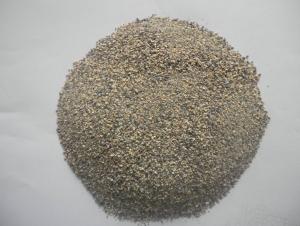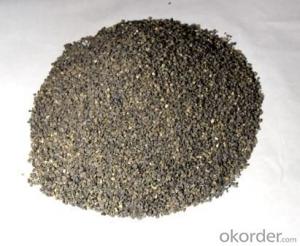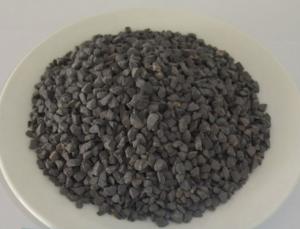Raw Materials for Refractory:Bauxite 86% Rotary for Refractory Products
- Loading Port:
- China main port
- Payment Terms:
- TT OR LC
- Min Order Qty:
- 25 m.t.
- Supply Capability:
- 20000 m.t./month
OKorder Service Pledge
OKorder Financial Service
You Might Also Like
Packaging & Delivery
| Packaging Details: | 25kg pp bags or 1MT/1.25MT bulk bags, 25MT in the 20ft container |
| Delivery Detail: | Within 15 days after receiving your advance payment |
Product Description:
bauxite, alumina or bauxite miner , main ingredients are aluminum oxide, hydrate alumina containing impurities,
is an earthy mineral.White or grey, brown yellow or light red by iron.From 4 to 3.9 g/cm3 density, hardness, 1 ~ 3, opaque, very brittle.
Very difficult to melt.Insoluble in water, soluble in sulfuric acid, sodium hydroxide solution.Mainly used for aluminium, refractory material.
Application:
1) The bauxite for aluminum industry in defense, aerospace, automotive, electrical, chemical, and daily supplies.
2) Bauxite clinker processed into fine powder and made after the casting mold. Used in military, aerospace, communications, instrumentation, machinery and medical equipment sector.
3) The bauxite can be used in refractory products. The refractoriness of high-alumina clinker is up to 1780 ℃. Its features are chemical stability strong, and physical properties of sound.
4) It can be raw material for alumina cement, abrasive materials and aluminum compounds.
Specification:
| Al2O3% | CaO % | Fe2O3% | refractoriness | bulk density |
| >88 | <0.4 | <1.5 | >1790 | >3.15 |
| >85 | <0.6 | <1.8 | >1790 | >3.10 |
| >80 | <0.8 | <2.0 | >1790 | >3.0 |
| 70-80 | <0.8 | <3.0 | >1790 | >2.8 |
| 60-70 | <0.8 | <3.0 | >1790 | >2.65 |
| 50-60 | <0.8 | <3.0 | >1770 | >2.45 |
Our Service:
Quality Control as per GB
Best Price With Good Quality
Prompt Delivery
Best Sales Service

- Q: What are the electrical fire protection materials?
- Electrical fire protection materials are the following: 1, fire proof board It is the most commonly used materials in the market, which has the advantages of fire prevention, moisture, abrasion, oil, easiness to clean, and more varieties of colors. Installed in the building exit corridors, stairs and corridors, such as fire ceiling ceiling, it can ensure that people can be evacuated safely, and to protect people from the spread of the fire. 2, fire proof door, fire proof door is divided into wooden fire door, steel fire door and stainless steel fire door. Fire proof doors are usually used for the opening of the firewall, the entrance of the staircase, the evacuation of the aisle, the openings and other parts of the pipeline, the fire prevention, playing an important role in reducing the loss of fire. 3, fire shutter It can be set in the location where it is not convient to install a fire proof wall, fire shutter generally has functions such as good fire resistance, heat insulation, smoke, compression, anti aging, wear and corrosion. 4, fireproof and mothproof wood fire wood moth is made by putting ordinary wood into the solution containing calcium and aluminum, and then into the solution containing phosphate and silicate. In this way, two ion will be undergong chemical reaction in the wood, forming materials similar to the ceramic, and filling the gap of cells and tissues, so that allowing it to have fireproof and mothproof performance.
- Q: What are the standards of refractory concrete ?
- Heat-resistant concrete refers to the kind of concrete which remain undamaged, do not lose the necessary bearing capacity at 200 ~ 1300 ℃ high temperature for long term, and still maintain its physical and mechanical properties.
- Q: What is the function of refractory in ceramics?
- It depends on what purpose you want to achieve. At the same time, part of special ceramics belongs to refractory. If is is to produce ceramic products, the aforesaid answers are very comprehensive.
- Q: Which schools are the best schools in the world for learning knowledge about refractories?
- Wish it helps you out.
- Q: How long is the fire-resistant time of fireproof wooden door?
- fire endurance class A (1.5 hours), class B (1.0 hours), class C (0.5 hours).
- Q: which kind of refractory is commonly used in the industry
- Like silicon, magnesium calcium and metallurgy refractories, glass, silicon, etc., knowing the basic materials, and the businesses are not the same. I suggest that you can buy the refractory book to read.. Others include zircon, shapeless refractory material and so many other cement, such as magnesia, high alumina,ect.. Iron making is using the acidity material, continuous casting is using the clay, nonferrous metals and other types of more complex hot-press charcoal; steel making is using the alkaline, magnesium chrome, magnesium carbon, and clay,etc..
- Q: What are the types of steel refractory materials
- (1) clay refractory brick (2) high alumina refractory brick
- Q: Is it necessary for the frame of glass fireproof door to be crammed with fire-proof material?
- Close the door , and check if the gap is normal, whether the hole and the door leaf are in the same plane, and whether the door leaf has tendency to fall down. Fire resistance steel door——means that use a cold rolled steel sheet as door frame, door plank and framework, and stuff a door leaf with incombustible material. If it is glass fireproof door, then the door frame should be equipped with fire-proof materials. I know a exclusive shop in Beijing dealing with fireproof doors, called Naecame.
- Q: I wanna ask about the thermal insulation material fire resistant level?
- The inorganic have glass wool \ foam glass Bian \ the best of organic is phenolic foam \ phenolic foam composite cement layer is level A.
Send your message to us
Raw Materials for Refractory:Bauxite 86% Rotary for Refractory Products
- Loading Port:
- China main port
- Payment Terms:
- TT OR LC
- Min Order Qty:
- 25 m.t.
- Supply Capability:
- 20000 m.t./month
OKorder Service Pledge
OKorder Financial Service
Similar products
Hot products
Hot Searches
Related keywords

























